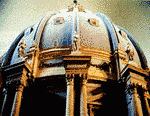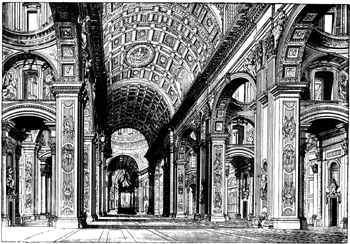High Renaissance


High Renaissance

High Renaissance
the period in Italian art history at the end of the 15th and during the first quarter of the 16th century; it heralded the highest, classical phase in the development of Renaissance art.
The main centers of the High Renaissance were Florence, Rome, and Venice (where the High Renaissance includes the 1530’s). The leading artists were Bramante, Leonardo da Vinci, Raphael, Michelangelo, Giorgione, and Titian. In High Renaissance architecture, sculpture, and painting the realism, humanism, and heroic ideals of the Renaissance, as well as their vitality and vividness, were crystallized and expressed with titanic force. Developing unusually quickly and in many directions, the art as a whole had a majestic, monumental character, a harmonic perfection, and a lofty idealistic structure. The principles of the period were reflected in a complex and varied manner throughout 16th-century Italian art and had a strong influence on all subsequent art. The characteristics of High Renaissance style were seen in the work of a number of German artists of the early 16th century (A. Dürer, H. Holbein).
REFERENCES
Wölfflin, H. Klassicheskoe iskusstvo. St. Petersburg, 1912. (Translated from German.)Rotenberg, E. I. Iskusstvo Italii XVI veka. [Moscow, 1967.] (Pamiatniki mirovogo iskusstva, series 1, issue 1.)